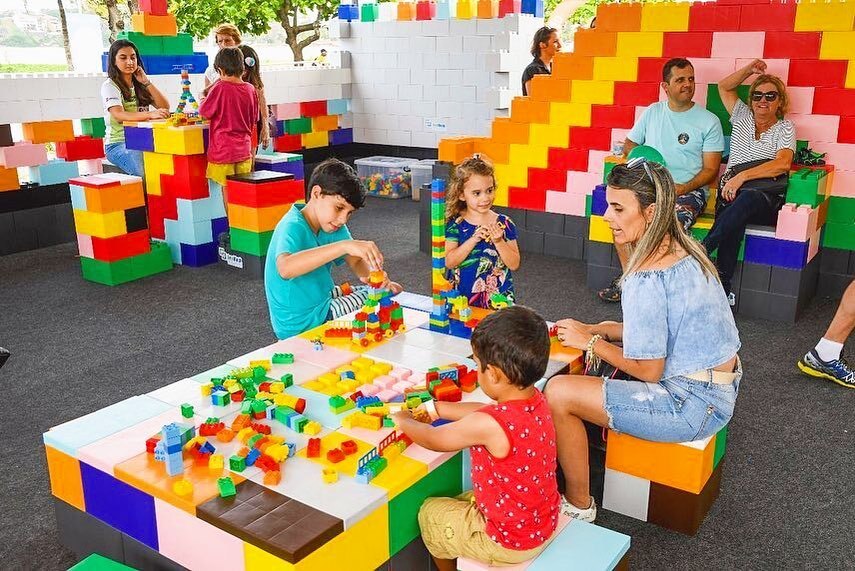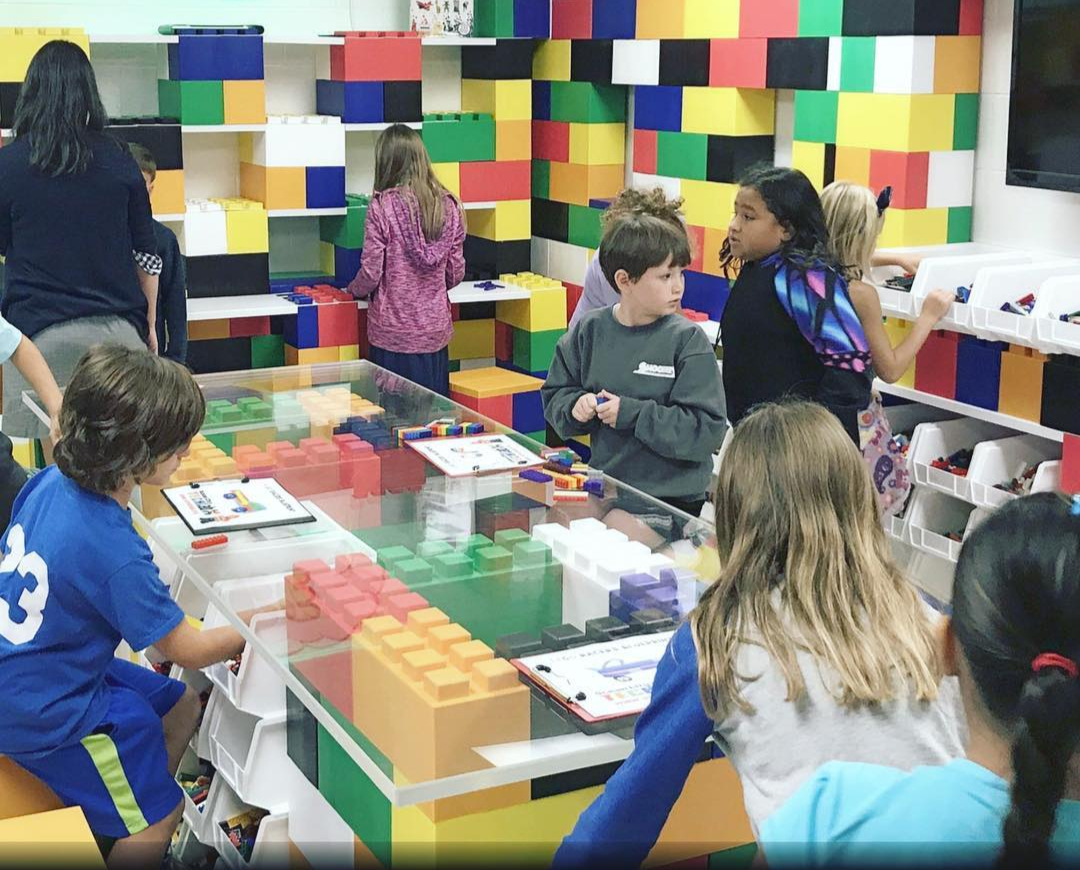How to Introduce Engineering Concepts to Children
Posted by Kate Murphy on Jul 7th 2025

Engineering is everywhere—woven into the world, from the bridges you cross to the smartphone in your hand. At its core, engineering blends creativity, critical thinking, and problem-solving—skills that are essential for success in the future workforce. Introducing engineering to kids early on not only ignites their curiosity but also gives them practical tools they’ll carry for life.
Whether you're a teacher, school administrator, or parent, introducing engineering concepts to kids doesn't have to be complex. With the right strategies, tools, and mindset, you can plant the seeds of innovation, discovery, and learning in even the youngest learners.
Why Introducing Engineering at a Young Age Matters
Early childhood is full of curiosity, experimentation, and trial and error—traits that mirror how real engineers solve problems every day.
Introducing engineering concepts early helps children:
- Develop critical thinking skills by exploring problems and solutions
- Build persistence through trial and error
- Strengthen their ability to collaborate, communicate, and adapt
- Connect the dots between STEM (science, technology, engineering, and math) learning and real-world applications
Research shows children who engage in STEM early are more likely to pursue it later in life. And beyond career readiness, early exposure helps children become confident thinkers who aren’t afraid to make mistakes and learn from them.
The Right Age to Start Teaching Engineering Concepts
So, when should we start teaching engineering? The answer: as early as possible, tailored to a child’s developmental stage.
Preschool (Ages 3-5)
In these early years, learning is powered by play. Young children are developing fine and gross motor skills, learning to explore materials, and beginning to understand cause and effect. Engineering at this age is about hands-on discovery:
- Building with blocks, like EverBlock®, or stacking cups
- Sorting and categorizing objects
- Making ramps or simple obstacle courses
Through playful experimentation, preschoolers learn how the physical world responds to their actions—a foundational concept in engineering.
Elementary (Ages 6-11)
Elementary-aged children begin to grasp more structured problem-solving. They’re eager to take on challenges, work in teams, and start thinking more abstractly. Concepts can include:
- Basic design thinking: Ask, imagine, plan, create, improve
- Simple machines: Pulleys, levers, and inclined planes
- Project-based learning: Designing bridges, towers, or marble runs
This is also a great age to begin tying engineering to real-world scenarios—like designing a solution to reduce water waste or building a shelter for animals.
Middle School (Ages 12-14)
By this point, students can dive deeper into technical concepts and work through multi-step problems. They enjoy challenges that allow for independence, collaboration, and creativity.
- Coding and robotics
- 3D modeling and prototyping
- Using the engineering design process to solve social or environmental issues
It’s also a pivotal time for nurturing STEM confidence in girls and underrepresented students. Representation isn’t just inspiring—it’s empowering. Sixty-one percent of school-aged girls say they’d be more encouraged to pursue science-based careers if they saw more female role models in engineering.
Using Everyday Objects and Toys to Teach Engineering
You don’t need a high-tech lab or expensive kits to teach engineering. In fact, some of the best tools are already in your classroom or living room.
Build with EverBlock®
Modular building blocks like EverBlock® offer hands-on ways for kids to explore spatial reasoning, design thinking, and structural integrity. EverBlocks® are lightweight enough to be used as STEM toys for younger children, yet strong and durable enough to construct full-scale, load-bearing structures in more advanced STEM classrooms.
Whether used to build walls, furniture, or imaginative sculptures, EverBlock® encourages problem-solving through construction. These oversized blocks are also great for group collaboration and gross motor skills development.
Household Engineering Supplies
Look around your house or classroom—you likely already have materials perfect for mini engineering challenges:
- Cardboard boxes
- Paper towel rolls
- Plastic cups
- String and tape
- Rulers and measuring tapes
- Pipe cleaners and clothespins
Challenge kids to build a paper bridge that holds weight, design a marble run, or create a parachute for a toy using coffee filters and string. These challenges build a strong foundation in physics and engineering principles—while being budget- and eco-friendly.
Embrace Open-Ended Play
Engineering isn’t just about solving a problem—it’s also about exploring how to solve it. Open-ended play encourages kids to test ideas, revise them, and try again. Many research studies show that open-ended play strengthens problem-solving, critical thinking, and cognitive flexibility—skills essential to STEM success. Try setting up an “innovation station.” Stock it with rotating materials like building blocks, recycled items, art supplies, and simple tools. With just a few items, kids naturally take on the roles of engineers, inventors, and designers.

Engineering Activities and Projects for Kids
Many U.S. adults recall that hands-on learning was the most effective way they understood STEM as kids, with 64% saying it helped them grasp concepts better than any other method.
Below are great examples of how to teach engineering to kids in action:
Build a Bridge
Challenge kids to design a bridge using only simple materials like paper, string, tape, etc. The goal? To support the weight of a toy car or a stack of coins without collapsing. This project introduces basic engineering concepts like load distribution, structural integrity, and balance.
Make it more challenging by setting time limits, limiting materials, or requiring a certain span. Have students sketch plans, build prototypes, and revise. You can also introduce real-world context by talking about famous bridges around the world and the engineering behind them.
Create a Catapult
Using popsicle sticks, rubber bands, and a plastic spoon, kids can build a simple catapult that launches marshmallows, pom-poms, or paper balls. This project explores physics concepts like force, energy, and angles.
For added STEM integration, measure and record the distance each object travels at different launch angles, then chart the results to practice data collection and analysis. You can even turn it into a mini competition: Which design launches the farthest? Which is the most accurate?
Rube Goldberg Machines
These chain-reaction machines are an excellent way to introduce kids to systems thinking, cause and effect, sequencing, and teamwork. Start simple: a line of dominoes that hits a ball, which rolls down a ramp and flips a light switch. Then, gradually add more complexity, like levers, pulleys, or funnels.
The magic of this activity is that it’s not just about function, but storytelling. Ask kids to create machines that perform a funny task, like popping a balloon or “feeding” a stuffed animal. Encourage them to plan it out step-by-step, work together, and revise as needed.
STEAM Art Projects
Combining art with STEM (turning it into STEAM) invites even more creativity:
- Paper Sculptures: Challenge kids to build a tall sculpture using only paper and tape that can stand on its own for at least one minute. Add a twist—can it support a small toy or weight? This teaches balance, structure, and center of gravity while encouraging creativity.
- Wearable Architecture: Have kids design a wearable structure—like a cardboard helmet, mask, or costume accessory. This design project involves measuring, shaping, and fitting.
- Light-Up Art: Use LED lights, coin cell batteries, and copper tape to bring a drawing or handmade card to life. It’s a creative way to introduce basic circuits and spark interest in electrical engineering.
How to Keep Kids Motivated and Curious
Keeping children engaged in engineering starts with creating a learning environment that supports exploration, effort, and creativity. Here’s how to keep kids engaged long-term:
- Celebrate Effort Over Perfection: Praise creativity, persistence, and willingness to try. Let kids know it’s okay to fail—it’s part of the process.
- Use Inquiry-Based Learning: Let kids ask the questions. Give them ownership over their processes and outcomes. Example: Ask open-ended questions like “How else could you build this?” or “What do you think will happen if…?”
- Model Enthusiasm: Your excitement is contagious. If you treat engineering as a fun adventure, kids will too.
- Tie Lessons to Real-World Issues: Frame challenges around real-world issues or causes they care about—like pollution, animal safety, or community improvement.
Nurturing the Next Generation of Thinkers and Builders
Introducing engineering to kids isn’t about pushing them into a future career—it’s about giving them the tools to think creatively, solve problems, and understand the world around them. Engineering is a mindset as much as a subject.
Teaching engineering concepts to young innovators doesn’t require a technical background or expensive supplies. What it does require is intention, encouragement, and opportunities for playful learning.
So, set out the blocks. Dig through the junk drawer. Ask the big “what if” questions. And most importantly, trust that every child has the potential to be an innovator.
Explore EverBlock® today and see how modular play can transform your classroom into a dynamic hub of engineering exploration and creativity.


 Made in the USA
Made in the USA
 Industrial Durability
Industrial Durability
 Limitless Creativity
Limitless Creativity
